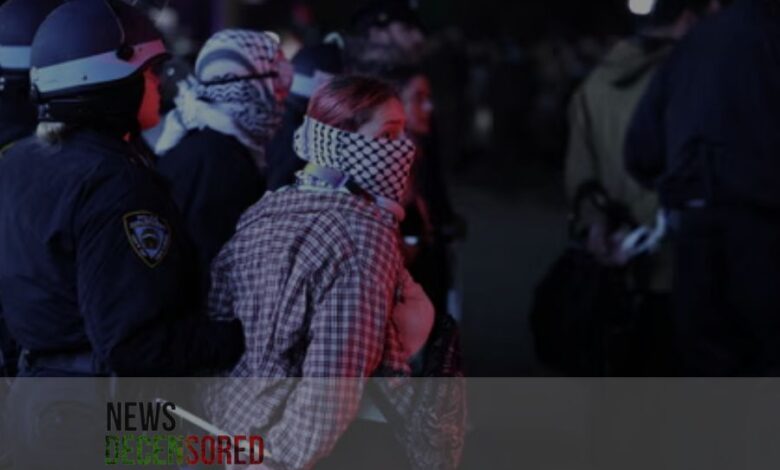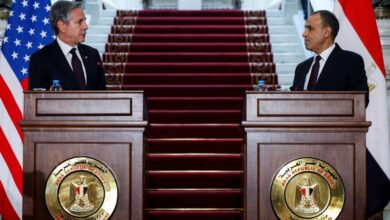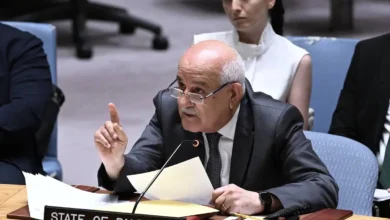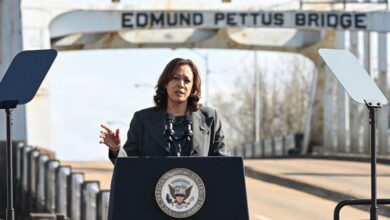Arrests Made as NYPD Clears Gaza Protest at Columbia University

In a significant escalation of the Gaza protests reverberating across college campuses in the United States, hundreds of New York City police officers descended upon Columbia University, effecting multiple arrests. The university’s campus, situated in upper Manhattan, became the focal point of demonstrations against Israel’s offensive in Gaza, a region where the death toll has surpassed 34,535 Palestinians.
Live broadcasts captured the dramatic scene as police officers breached the university premises late Tuesday evening, their actions unfolding against intensified student activism.
The targeted location was Hamilton Hall, an administrative building confiscated earlier in the day by protesting students following the administration’s announcement of disciplinary actions against those who defied orders to disperse.
Rechristening the building as “Hind’s Hall” in honour of Hind Rajab, a six-year-old Palestinian casualty of the Gaza conflict, the demonstrators faced off against law enforcement clad in riot gear. The ensuing clash saw officers dismantling barricades and dispersing protesters from the main encampment, marking a stark contrast to the peaceful sit-ins associated with the anti-war movement of the 1960s.
Columbia Students for Justice in Palestine, in a social media post, decried the police presence, citing officers in riot gear and the cordoning off of multiple city blocks. Images circulated of officers scaling ladders to access Hamilton Hall through second-floor windows while handcuffed protesters were led away to awaiting police vehicles.
Chants of “Free, free, free Palestine!” echoed among supporters gathered outside Hamilton Hall, underscoring the sincere solidarity with the Palestinian cause. The timing of the police intervention, precisely 56 years since the dispersal of a student protest against racism and the Vietnam War, added historical resonance to the unfolding events.
However, amidst the escalating tensions, assertions emerged regarding “outside agitators” instigating unrest within the student ranks. New York Mayor Eric Adams, in a press briefing preceding the police action, hinted at external influences manipulating student protesters, casting doubt on their awareness of these elements.
In response to the unfolding crisis, Columbia University defended its decision to involve law enforcement, citing the occupation, vandalism, and threats directed at campus personnel. Emphasising the need to maintain order and uphold the rule of law, university officials stressed that the intervention was prompted by the protesters’ actions rather than the legitimacy of their cause.
Contrary to official narratives, protest leaders like Mahmoud Khalil refuted external instigation claims, asserting student participation’s organic nature. Khalil, a Palestinian student at Columbia’s School of International and Public Affairs, reiterated the protesters’ demands for divestment from Israel-linked investments, financial transparency, and amnesty for participating students.
The demonstrations at Columbia reflect a broader wave of activism sweeping campuses nationwide, compelling universities to confront their complicity in global conflicts. From coast to coast, students have mobilised in solidarity with Palestine, prompting arrests and confrontations with law enforcement, as seen in instances at the University of Southern Florida, the University of New Mexico, and the University of Texas at Austin.
Notably, at Brown University in Rhode Island, dialogue supplanted confrontation as administrators engaged with protesting students to explore divestment options. This conciliatory approach underscores the evolving dynamics between institutions and student activists, highlighting the potential for constructive engagement amid contentious issues.
As the Gaza protests continue reverberating across college campuses, the clash between student activism and institutional authority underscores the enduring relevance of dissent in shaping discourse and effecting change.




